Back in 2019, Matt Aitken explained the work of Weta Digital on Avengers: Endgame. He then went on to work on Black Widow.
How did you and Weta Digital get involved on this show?
It is common for Weta Digital to be asked by Marvel to contribute to their shows, and we are always happy to be involved—it’s always great, complex, fun work! For me the timing with Eternals worked out really well. I wrapped up on Avengers: Endgame in early April 2019 and then took a break. I helped out getting our work on Black Widow up and running then I was free to start on Eternals in July 2019 with some early work helping develop the look of the cosmic energy effects.
How was the collaboration with Director Chloé Zhao and Overall VFX Supervisor Stephane Ceretti?
Chloé and Stephane are both great to work with. We ended up working directly with Chloé more than some of the other Marvel directors we have worked with, because we previsualised several sequences in the film that took shape in post- production. Chloé was a really positive energy to work with and seemed very much in her element using visual effects to tell the story she wanted to tell. She was unrestrained in her enthusiasm for the stuff that we showed her.
Stephane is uncompromising and always made sure to hold us to delivering the highest quality work. But at the same time, he is always up for a laugh and has lots of great stories from all the past shows he has worked on, so he kept us entertained. I really appreciated his strong visual sense and his ability to conceptualise something that had never been seen before. This is something he has done many times before in the MCU and it was hugely valuable as we worked together to create the visual language of the Eternals and their cosmic energy effects.
What were their expectations and approach about the visual effects?
Chloé Zhao is renowned for her very naturalistic, almost documentary style of films, and on this film, she wanted to preserve that type of visual language. It was extremely important to preserve the sense of the authenticity of the live shoot location through the CG work. Even though 43% of the beach fight shots are fully or predominantly CG, we could never let it feel like it wasn’t location-based.
How did you organize the work with your VFX Producer?
We formed a very tight team on this show with myself, the VFX Producer Marvyn Young and the VFX Associate Producer Lily Lawrence. The three of us did pretty much everything together from shot breakdowns and bidding the work, through to many client calls, and final delivery.
What are the sequences made by Weta Digital?
Weta Digital sequences included the third act battle on the volcanic island; Tiamut’s emergence and defeat via Uni-Mind; the ancient Aztec city; Centauri Six; Makkari searching the globe for the site of Tiamut’s emergence, and a mid-credit sequence featuring Eros / Starfox and Pip the Troll.
Can you elaborates about the design and the creation of the Deviants?
Our Deviant design work focussed on the lead Deviant Kro in his most evolved, humanoid form. Our modellers designed the hero asset by referencing a couple of frames of concept artwork provided by the filmmakers, before developing and finessing the design over many iterations. For his face we did one review with the filmmakers where we presented 28 different design proposals as detailed geometry. We based the final design of Kro’s face off the notes from that review.
Can you tell us more about their animation?
Kro’s hero rig is complete with a skeleton, muscles, and multiple layered tentacles that have individual motion, with a destruction element built in to deal with his eventual dismemberment. His solid chest-plate structures meant animators had to find a way to make Kro dynamic while restricting the deformation of the chest-plate so that it didn’t seem too flexible. His lower legs have the same anatomical structure as the hind leg of a wolf, a hint that Kro hasn’t yet realised his fully evolved form. The motion edit team transferred motion capture data via custom character maps that accommodated this leg design. Then the animation team added extra compression to the larger ankle joints to complete a believable performance. His tentacles are animated individually using keyframe animations supplemented with procedural wave deformers.
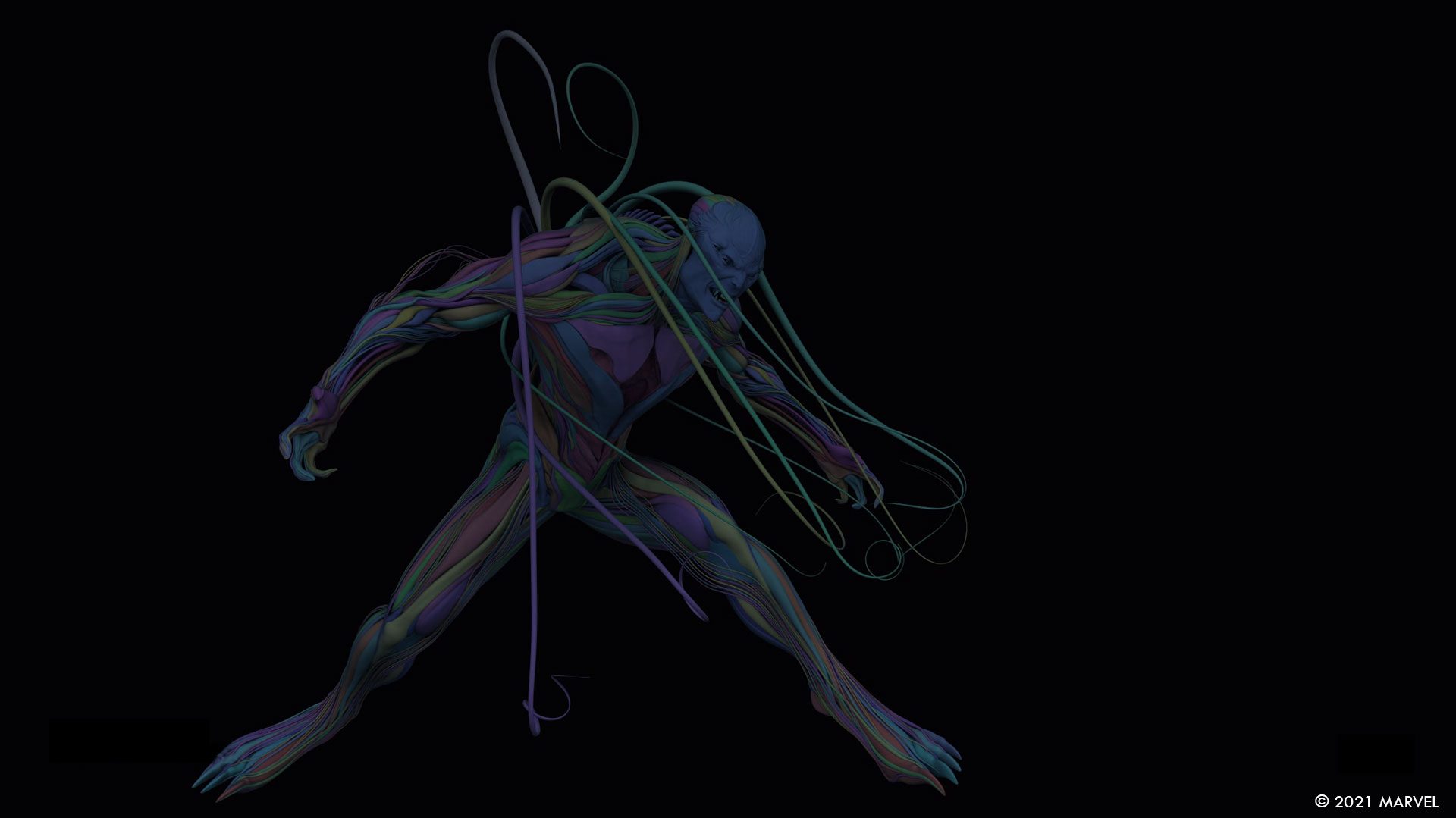
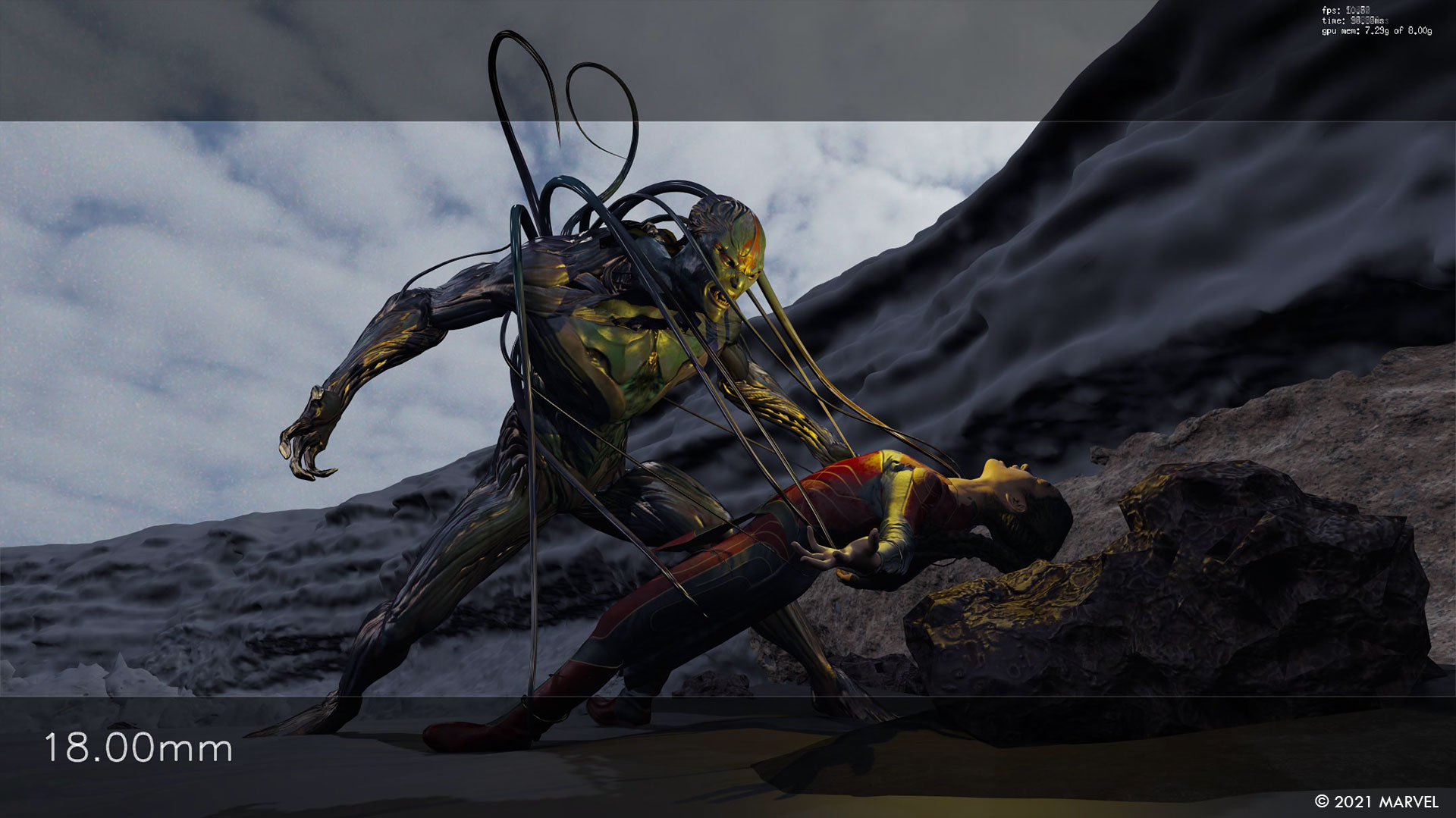
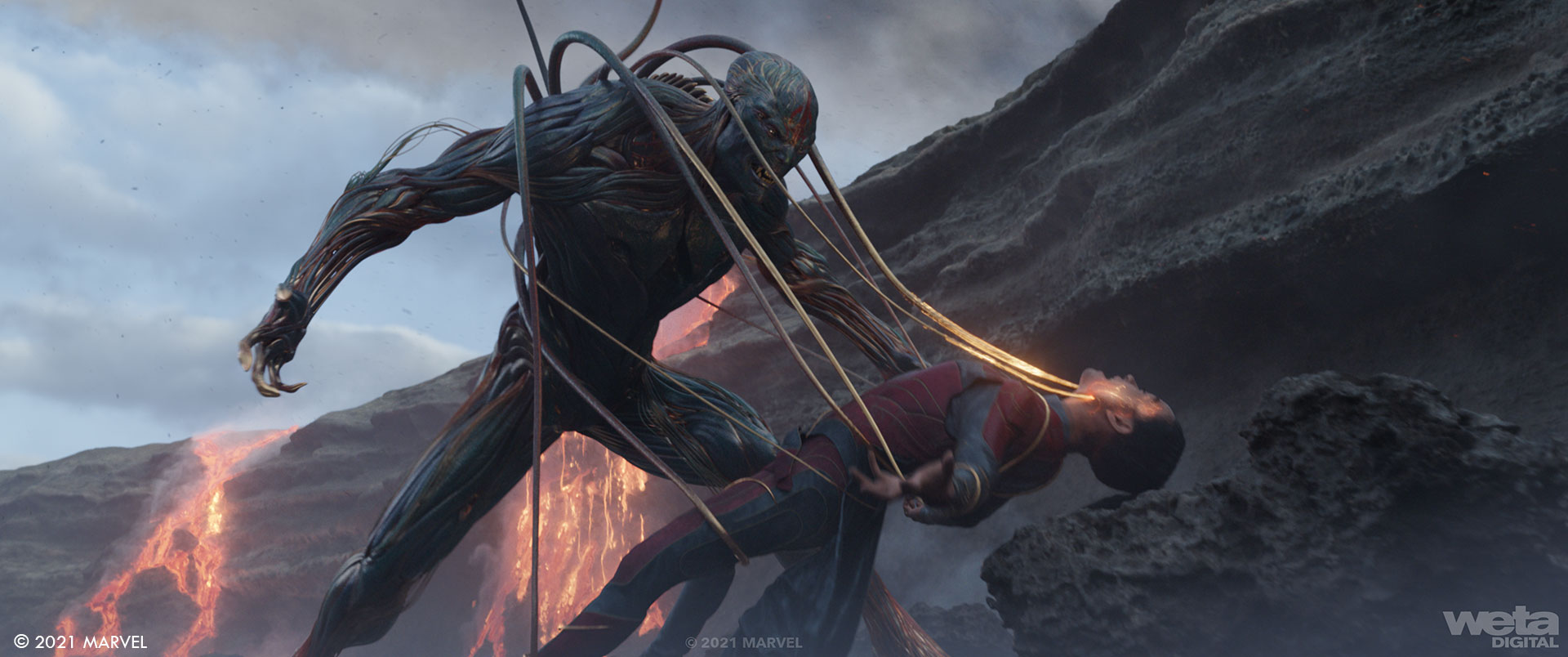
Later in the movie, we discover the Deviants changing their shape. Can you tell us more about that?
The Deviant transformations in the ice cave was some of the more painstaking work that we had to create on the show. The transformations are achieved with animated geometric morphs which were timed across the bodies of the Deviants with maps, and FX-based cosmic energy. The creature morphs were complicated by the need to support facial animation throughout the transition, changes to the creature surfacing that had to synchronise with the geo morph, and the subsurface nature of the cosmic energy component. Our rigging team made puppets that supported all aspects of the transformations for the animators, so they could retain overall control of the timing. We layered secondary dynamics onto the creature rigs at bake time to add more complexity.
Can you tell us more about his face animations?
Actor Bill Skarsgård provided the reference performance for Kro’s more dialogue- driven scenes. He stood in for Kro on set to provide a foil for Angelina Jolie’s Thena, and wore dual head-mounted cameras to capture his facial performance. The facial capture wasn’t solved however, as Kro’s alien face with four eyes was too different from the human face for this. Instead, we used the footage as visual reference and created the facial performance entirely through keyframe animation. The challenge here was to make the eyes feel independent of each other, while still reading as one cohesive emotional performance.
How did you work with the SFX and stunts teams for the various fights?
The SFX team established the smoky look of the beach fight and we adopted their visual language for our fully-CG shots. The stunt team laid the groundwork for the individual fighting styles for the Eternals which we were able to pick up and extend with our digital doubles: keyframed superheroes are able to perform elaborate moves that even the most extraordinary stunt performer can’t achieve.
Can you explain in details about the Eternals powers?
We started work on conceptualising the Eternal’s cosmic energy months before the shoot, to provide reference for the characters’ performance. Typically we designed the effect for one of the characters in concept art first, then extended the look into CG via FX simulations and comp. From the start we had to balance the dual properties of something physical but made out of pure energy: if we pushed it too far in either direction, the elements would become too amorphous, or feel too much like gold metal. Our final solution spanned a pipeline that included models, shaders, textures and FX, and included a dynamic procedural geometry simulation to manage the evolutionary nature of the energy.
we used a combination of traditional asset work: models and lookdev, along with FX simulations and subsurface lighting FX.
For the cosmic energy glitches that show up in Thena’s face when she starts to malfunction with Mahd Wyry, We underpinned all instances of the cosmic energy with a strong visual language that we named ‘Kirby Lines » after the creator of the Eternals comics Jack Kirby. Consisting of very geometric, clean shapes and lines, they form glyphs that can be seen through the Eternals costumes, powers and weapons, as well as the Uni-Mind effect.
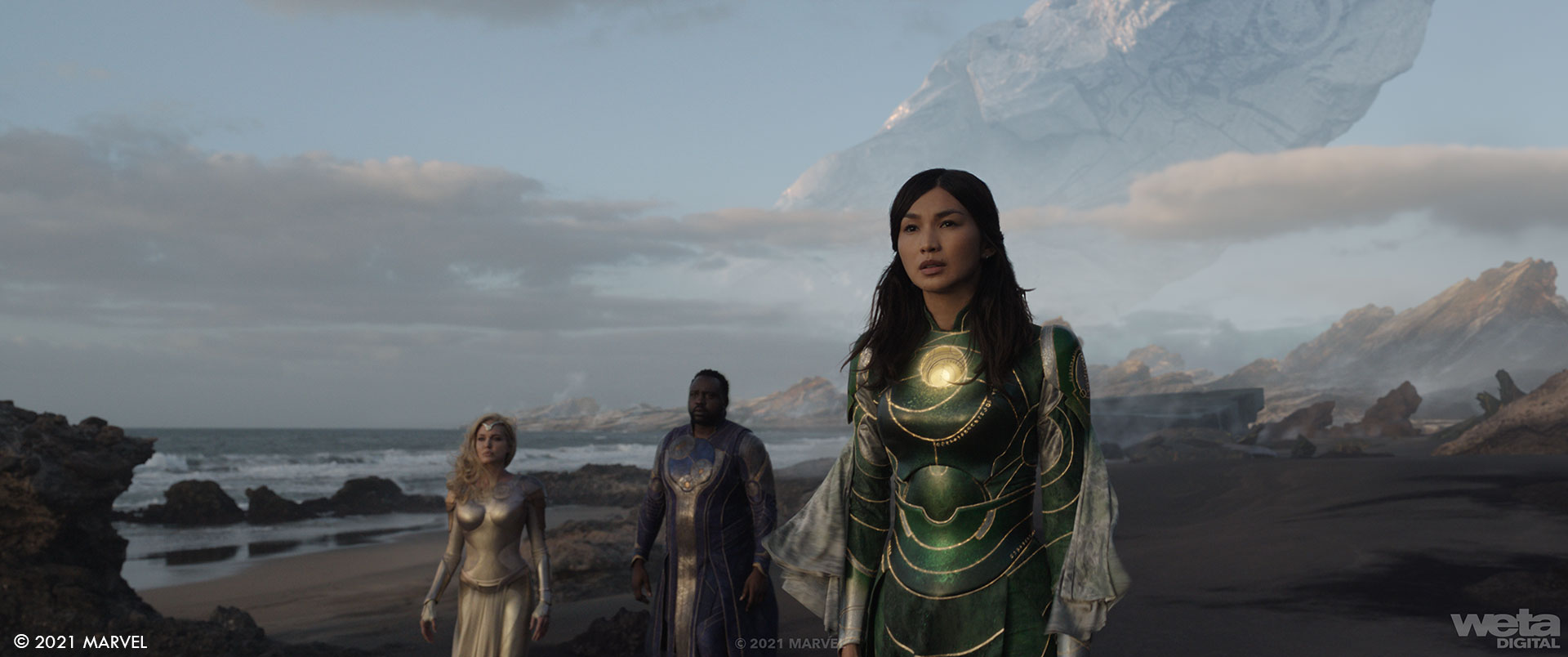
Can you tell us more about Thena weapons?
Like other examples of the Eternal’s cosmic energy FX, Thena’s weapons had to appear to be made of a golden energy. The colour was very important and the weapons had to glint in the light without glowing or flaring. The rule for Thena’s weapons was that she had to always be connected to them for them to work, she couldn’t fire projectiles or throw the energy at all. The filmmakers wanted Thena to be adept at modifying the weapons-mid fight to take whatever form was most effective for that particular beat. So a procedural solution for remodelling the weapon’s underlying geometry to support these shape changes was a key part of the effect.
How did you create the various environments and especially the volcano?
The environments are predominantly 3D CG. Even the work handled by the digital matte painting team was built out in 3D, rather than adopting a 2D workflow, to support complete flexibility of camera animation. This approach was applied to the volcano (as well as the rest of the island), the ancient Aztec city, the ice cave, and the alien landscape of Centauri Six.
Our main digital environment was the beach: 43% of our shots on the beach were full-CG or predominantly CG. To represent the ocean correctly in CG form, Layout made a bathymetric map of the seafloor and modelled it in geometry so that our simulated waves would crash onto the beach in the right way. We did a lot of work on the plate-based beach shots, often replacing the sand: not just to erase footprints, but to keep the continuity of the beach since each tide would significantly change its shape.
The volcano lava and smoke were handled by our FX team as full fluid and volumetric simulations. We created four distinct stages for the volcanos with explosive chunks of debris, gas, smoke, and lava FX.
What kind of references and influences did you received for the environments?
The production shot on location on a black sand beach in the Canary Islands and that location provided us with much of the reference we needed to create our own version of the beach and the wider views of the deserted island, which is entirely CG. While we were working on the effects for Eternals a new volcano erupted near Reykjavík in Iceland, which gave us a lot of great lava reference.
How did you handle the lava simulations?
The lava simulations were full fluid sims. The shader for the lava was coupled to temperature settings we wrote into the fluid simulations, allowing us to create a sense of the lava cooling and crusting over on the surface.
Which one was the most complicated to create and why?
There’s a fully-CG shot straight after the volcano erupts where we fly right into the smoke, ash, rock and airborne lava, rendered through a very wide-angle lens. There were many components to the simulation: rigids, volumes, fluids and particles, and they all had to interact with each other to achieve the level of believability we required. That shot was in production for many months.
Can you elaborates about the design and creation of Tiamut?
We received a Tiamut model from Marvel that had been created by another VFX vendor on the show. We used that whole-body model as a starting point for our more detailed head and hand models.
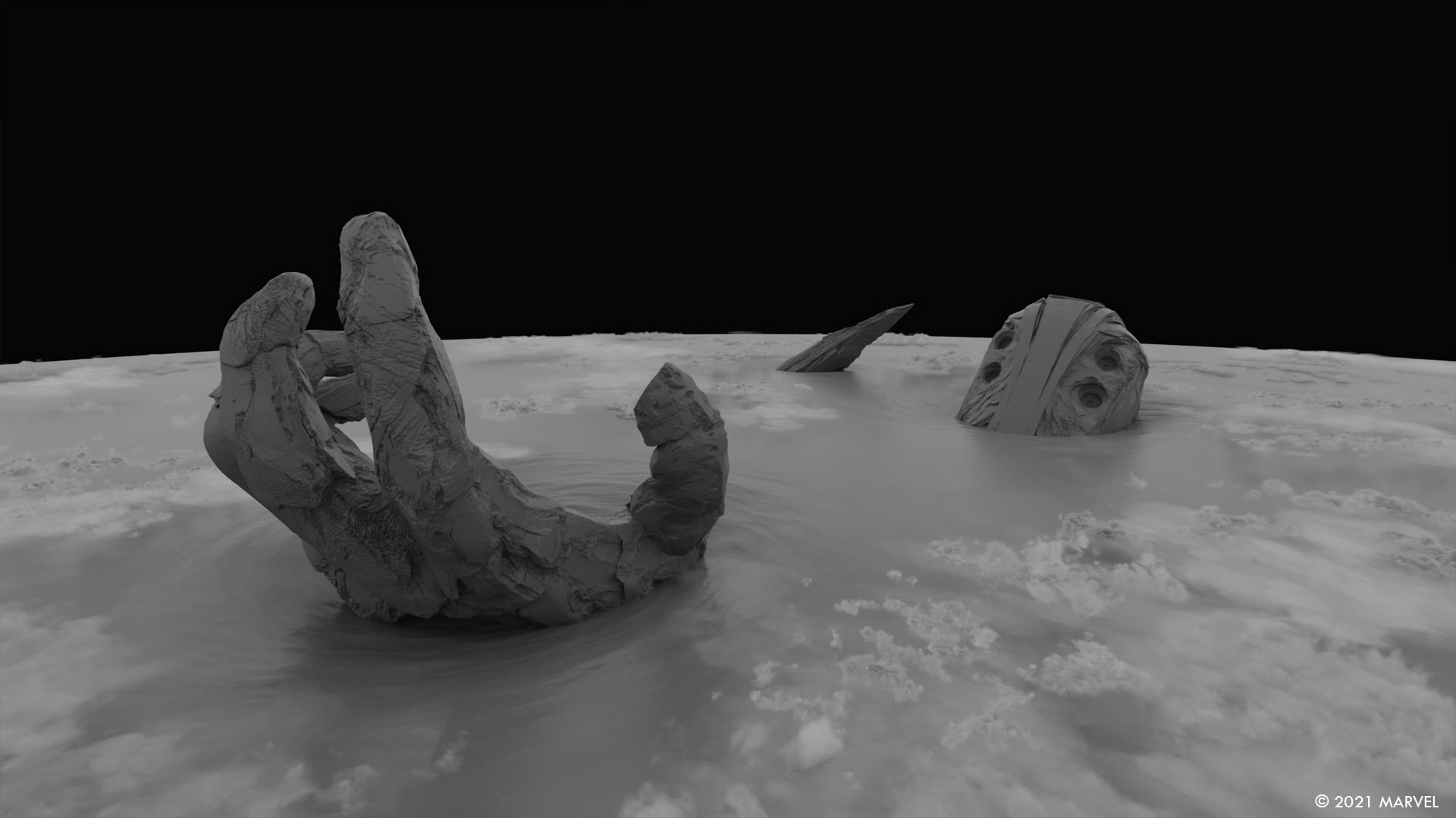
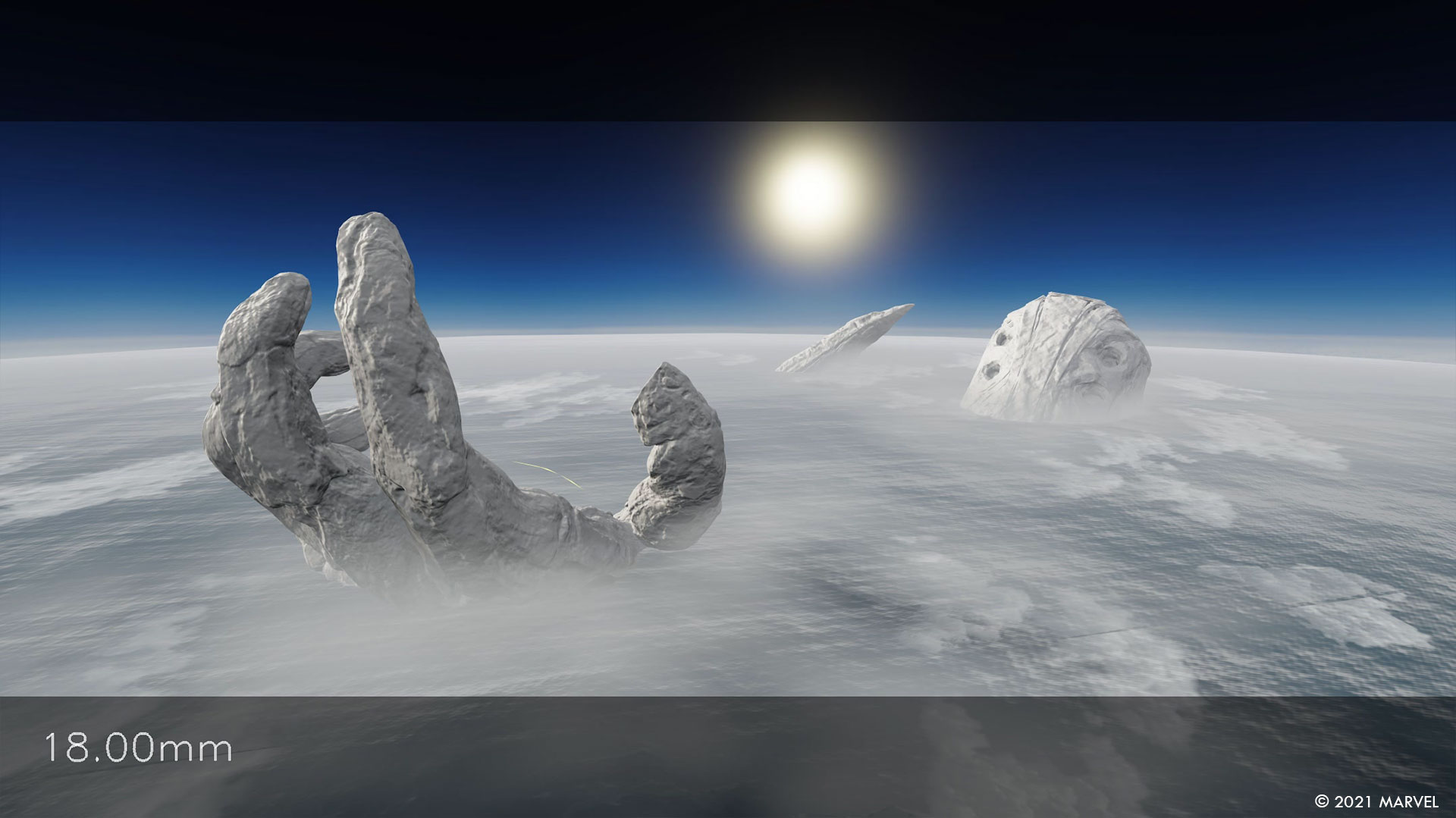
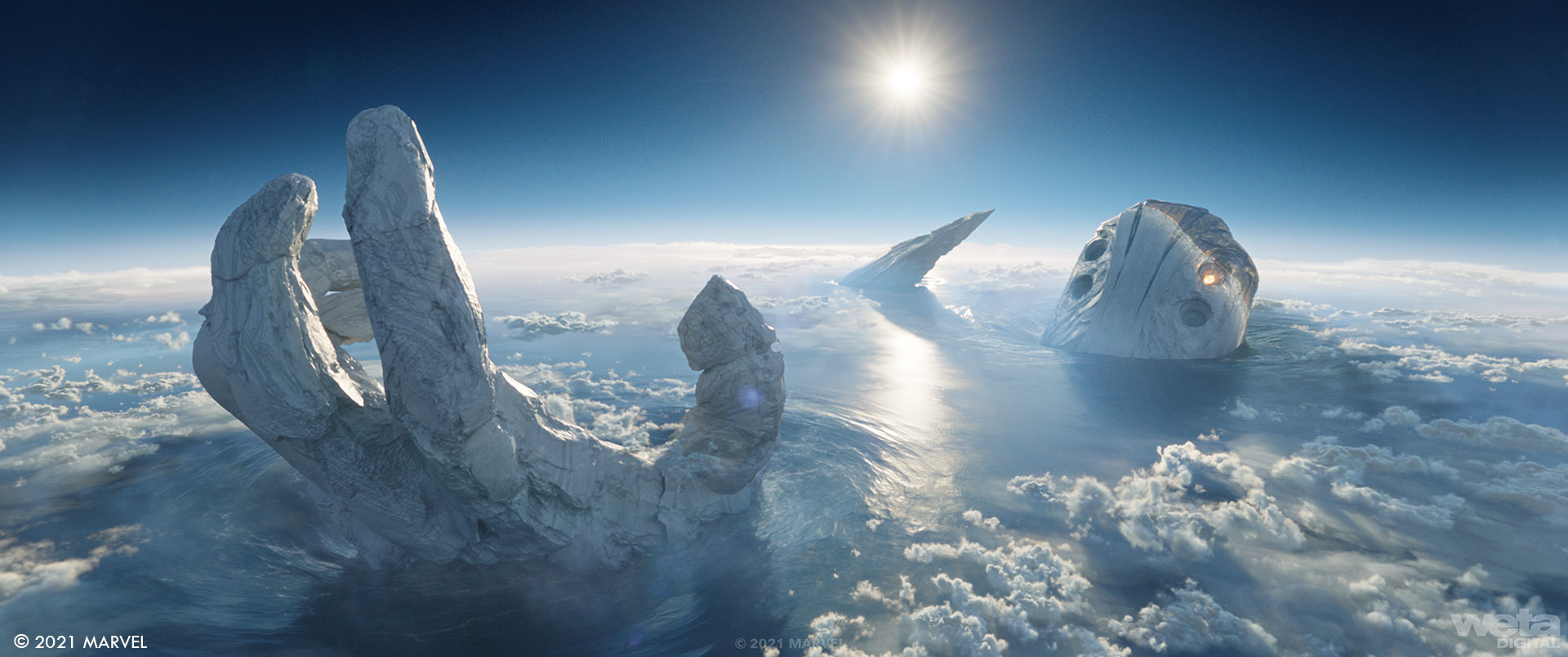
How did you handle his massive size?
Tiamat is a character but also, due to his massive size, an environment—he becomes the setting for the showdown between Ikaris and Sersi. We created Tiamut as a creature bake that was passed on to matte painting, who incorporated the animated bake into their matte painting environments and rendered it as a dynamic environment. Matte painting did all the shader and texture work.
With such an impressive size, how did you handle the animation and lighting work?
As a dynamic environment, we adopted some of the same workflows we developed for London in Mortal Engines. For that show we developed support for our layout teams to work with animated environments, and we used that same approach for Tiamut in Eternals.
Production didn’t use any extra lights on location; they just shot with natural light. So we had to use very natural looking lighting: our lighting had to keep everything very much grounded in reality.
Which shot or sequence was the most challenging?
For the fight on the beach we were asked by Marvel to provide high-end digital doubles of the cast. COVID-19 made the usual additional photography shoot impossible, so we worked with director Chloé Zhao to design several sequences that we completed as fully CG, with the aid of these digital doubles. Creating these digi doubles of recognisable cast members was some of the most demanding work we are asked to do, as they needed to hold up and be indistinguishable from the live-action cast when seen in mid-shot.
Is there something specific that gives you some really short nights?
The large-scale water simulations were a concern for months. They were very slow to simulate and it got to the point where if one of the simulations failed, there may not have been time left in the schedule to re-run it.
What is your favorite shot or sequence?
The wide shots of Tiamut turning to marble, particularly the final shot of Tiamut fully marble, as seen from the altitude of the International Space Station. I think those shots are very beautiful.
What is your best memory on this show?
So many to choose from! Getting to work with Chloé Zhao and the great team at Marvel. Filming on a wild black sand beach on an island in the middle of the Atlantic Ocean. Getting our first big water simulation shot approved. But if I have to pick one, it would be working with an amazing team of people at Weta Digital, they are truly world class.
How long have you worked on this show?
I started on Eternals in July 2019 and worked pretty solidly on the film through to delivery in early October 2021, so around 2 1?4 years.
What’s the VFX shots count?
Weta Digital finalled 552 visual effects shots on Eternals.
What was the size of your team?
There was a core Weta Digital visual effects show team of 420 artists—in total 565 people at Weta Digital worked on Eternals.
What is your next project?
I’m afraid I can’t say, but it’s something I’m very excited to be working on.
A big thanks for your time.
WANT TO KNOW MORE?
Weta Digital: Dedicated page about Eternals on Weta Digital website.
Stephane Ceretti: Here is my interview of Production VFX Supervisor Stephane Ceretti.
© Vincent Frei – The Art of VFX – 2021





